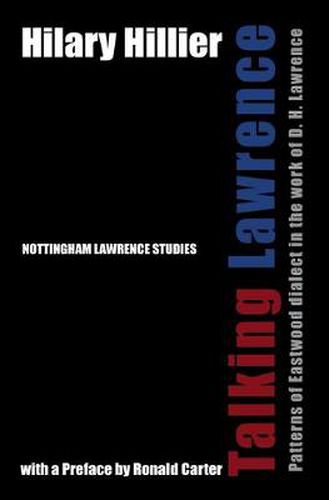Readings Newsletter
Become a Readings Member to make your shopping experience even easier.
Sign in or sign up for free!
You’re not far away from qualifying for FREE standard shipping within Australia
You’ve qualified for FREE standard shipping within Australia
The cart is loading…






The dialect of Eastwood lies at the heart of many of Lawrence’s best-loved works. It is unique to the local community in which he grew up and in which many of his works were set. In this indispensable study Hilary Hillier presents a framework for understanding the dialect, tracing the key elements of its grammar and its accent, and detailing ways in which these differ from so-called ‘correct’ English. Each feature is illustrated by examples from both Lawrence’s works and contemporary speech to demonstrate how this dialect continues to live in the Eastwood area today. Talking Lawrence reveals the precision with which Lawrence’s use of language exposes significant social distinctions between his characters. Some of his most remarkable characters, truculent colliers such as Morel or formidable women such as Mrs Gascoyne, are brought to sparkling life by the language they speak. Lawrence knew these people, and he knew their language. He was able to use that language with skill, insight, subtlety and, perhaps most surprising of all, humour. Hilary Hillier’s study is a resource for all readers of Lawrence, and an unparalleled introduction to this fascinating subject.
$9.00 standard shipping within Australia
FREE standard shipping within Australia for orders over $100.00
Express & International shipping calculated at checkout
The dialect of Eastwood lies at the heart of many of Lawrence’s best-loved works. It is unique to the local community in which he grew up and in which many of his works were set. In this indispensable study Hilary Hillier presents a framework for understanding the dialect, tracing the key elements of its grammar and its accent, and detailing ways in which these differ from so-called ‘correct’ English. Each feature is illustrated by examples from both Lawrence’s works and contemporary speech to demonstrate how this dialect continues to live in the Eastwood area today. Talking Lawrence reveals the precision with which Lawrence’s use of language exposes significant social distinctions between his characters. Some of his most remarkable characters, truculent colliers such as Morel or formidable women such as Mrs Gascoyne, are brought to sparkling life by the language they speak. Lawrence knew these people, and he knew their language. He was able to use that language with skill, insight, subtlety and, perhaps most surprising of all, humour. Hilary Hillier’s study is a resource for all readers of Lawrence, and an unparalleled introduction to this fascinating subject.